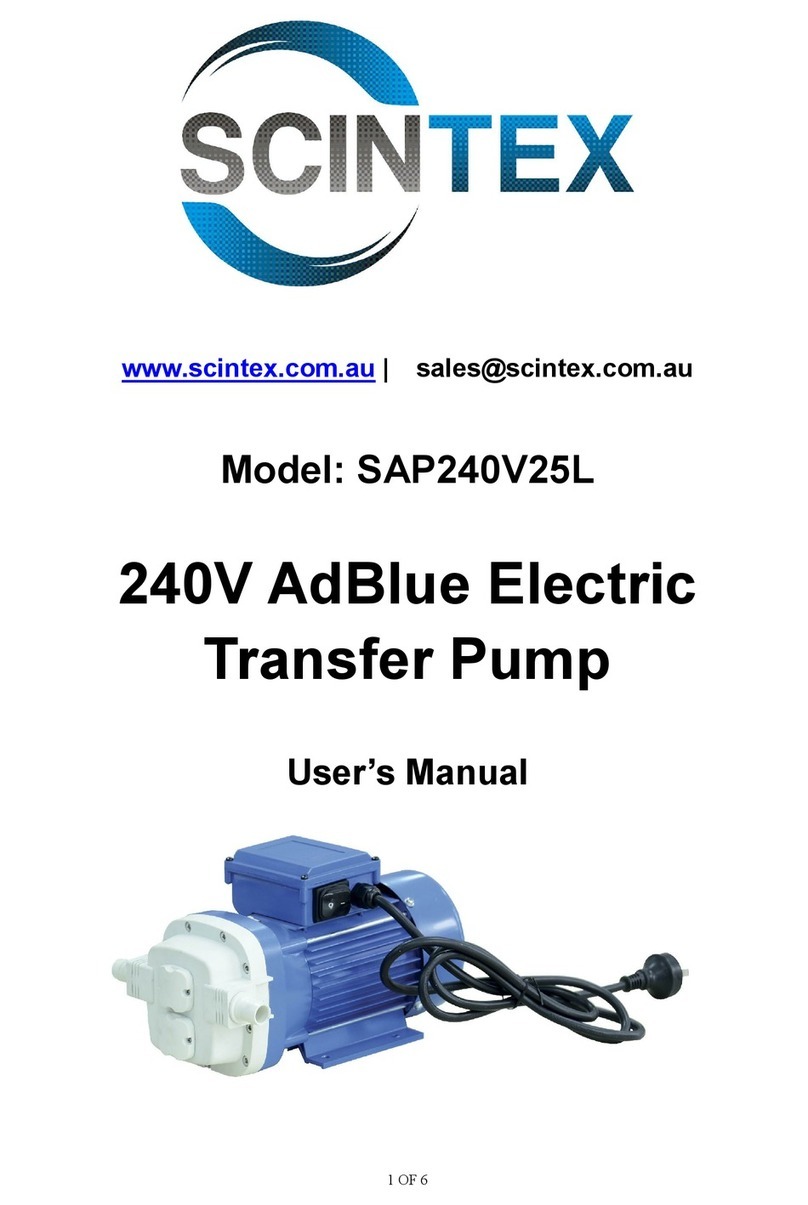
4 OF 6
ATTENTION!
It is the installer’s responsibility to use tubing with adequate characteristics.
Loosening of the connections (threaded connections, flanging, gasket seals) can cause serious
ecological and safety problem.
Check all the connections after the initial installation and on a daily basis after that.
Tighten the connections, if necessary.
F. DAILY USE
a. If using flexible tubing, attach the ends of the tubing to the tanks. In the absence of an appropriate slot,
solidly grasp the delivery tube before beginning dispensing.
b. Before starting the pump, make sure that the delivery valve is closed (dispensing nozzle or line valve).
c. Turn the ON/OFF switch to ON. The by-pass valve allows functioning with the delivery closed only for brief
periods.
d. Open the delivery valve, solidly grasping the end of the tubing.
e. Close the delivery valve to stop dispensing.
f. When dispensing is finished, turn off the pump.
ATTENTION!
Function with the delivery closed is only allowed for brief periods (2-3 minutes maximum).
After using, make sure the pump is turned off.
G. PROBLEMS AND SOLUTIONS
PROBLEM POSSIBLE CAUSE CORRECTIVE ACTION
The Motor is not turning Lack of electric power Check the electrical connecting
Motor Problems Contact the Service Department
The motor turns slowly when
starting
Low voltage in the electric power
line
Bring the voltage back within the
anticipated limits
Low or no flow rate
Low level in the suction tank Refill the tank
Filter clogged Clean the filter
Excessive suction pressure
Lower the pump with respect to
the level of the tank or increase
the cross-section of the tubing
High loss of head in the delivery
circuit (working with the by-pass
open)
Use shorter tubing or of greater
diameter
By-pass valve blocked Dismantle the valve, clean and/or
replace it.
Air entering the pump or the
suction tubing
Check the seals of the
Connections
A narrowing in the suction tubing Use tubing suitable for working
under suction pressure
Low rotation speed
Check the voltage at the pump.
Adjust the voltage and/or use
cables of greater cross-section
The suction tubing is resting on Raise the tubing
















